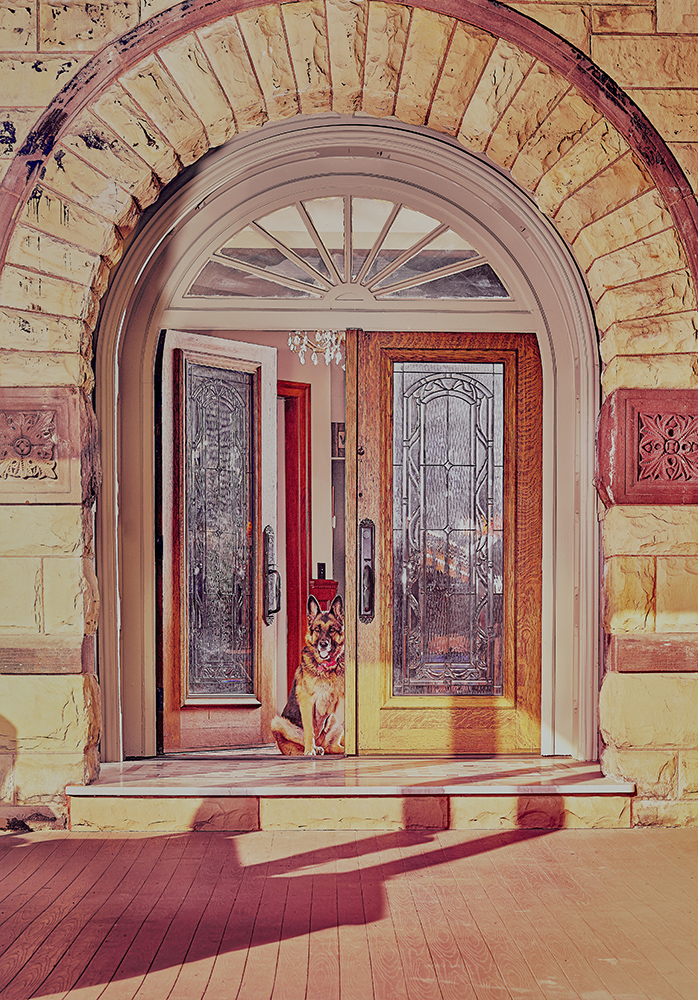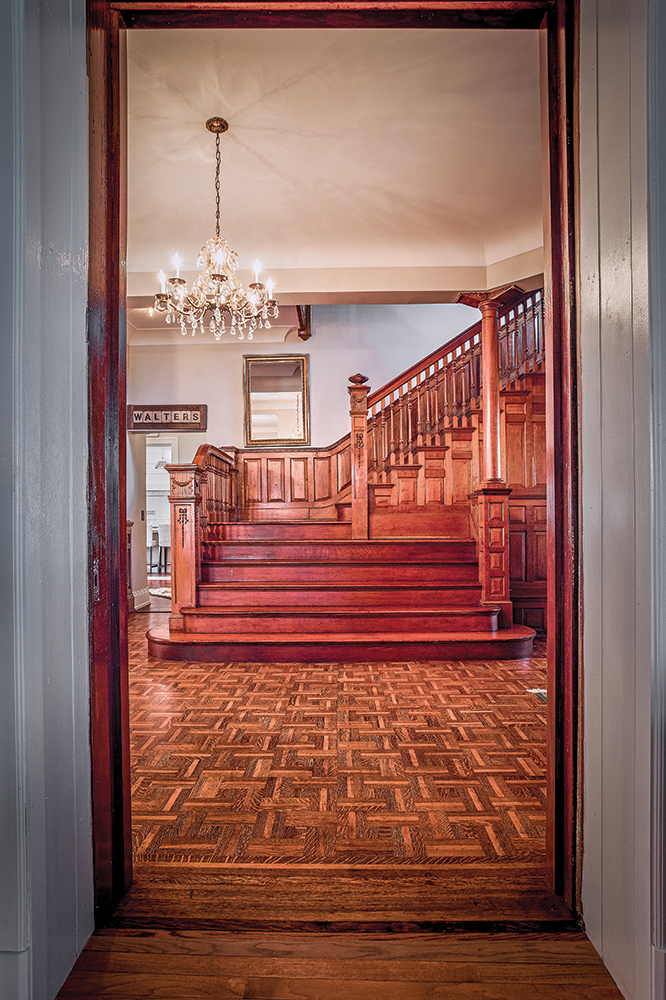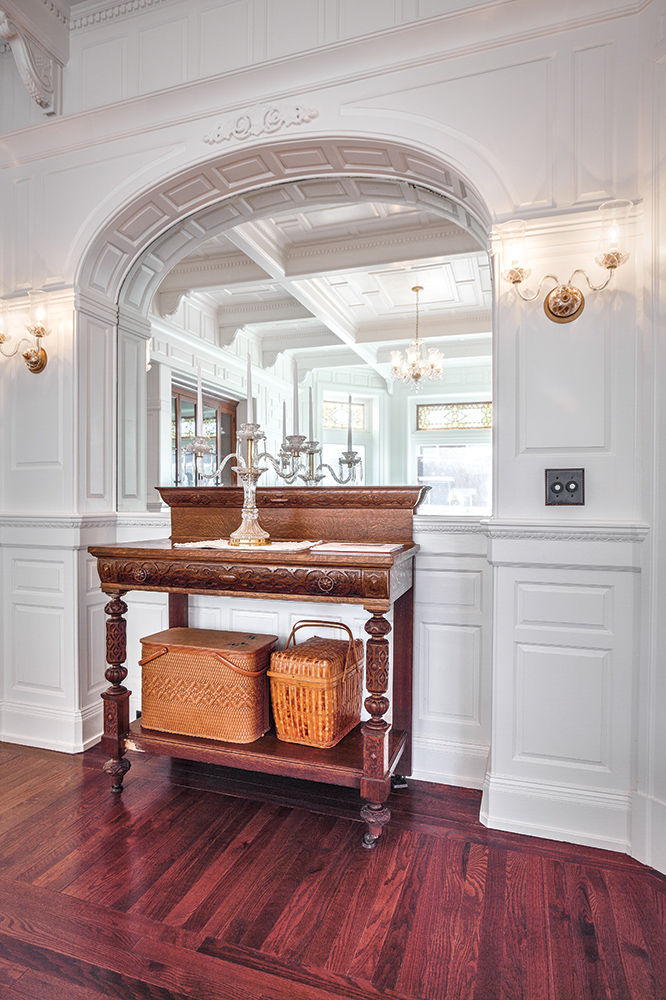
Photographs by Devyn Glista
The home’s stately front entrance had been knocked out and filled with cinder blocks to fit a fire door and ramp. “We looked for two or three years for a front door to fit the same arch pattern,” Ben says. “[This] came out of a church in Avondale that Wooden Nickel had salvaged.”There are people who rehab old homes. Then there are Kristen and Ben Walters, who spent six years, seven months, and 11 days painstakingly restoring an 1895 Samuel Hannaford–designed house in Walnut Hills. When they bought the property, it was an abandoned nursing home. “It was as if the nursing home people had been sucked out—every bed was in here, made with every pillow, every bedside table, all the nurses’ stations,” says Kristen. Intent on recycling, this meant personally hauling 48 sinks, 48 toilets, and 48 beds to destinations of reuse. There was architectural salvage to do, too: recreating an original stained glass window knocked out for an A/C unit, tearing down a giant eyesore of an exterior addition, replacing some 100 windows. Ben acted as general contractor and was hands-on with much of the work. As in: of 57 days they rented boom lifts for exterior work, he spent 56 in them. The reason for that one day out? Knee surgery. But the couple can’t say enough about the contractors (craftspeople, truly) who spent years working alongside them.

Photographs by Devyn Glista
Cincinnati architect Samuel Hannaford designed the house for railroad tycoon J.H. Rhodes. Rhodes didn’t stay long, and neither did the home’s second occupant. But the third owner—the Nielen family—settled in. Virginia Cox, their great-granddaughter, lived there as a teenager and enthusiastically contacted the couple when she heard they were restoring it into a single-family home. Though advanced in age, her memories of those years were strong, and she became something of a consultant on the original layout.

Photographs by Devyn Glista
The biggest challenge? “There was always that tension between expediency and historical authenticity,” Ben says. The latter almost always prevailed. This meant meticulously pulling up and scraping down hexagonal bathroom tile so that they could re-lay it rather than trash it, installing period-appropriate push buttons instead of standard electric switches, and on and on and on.

Photographs by Devyn Glista
That attention to sustainability and detail wasn’t just aesthetic. The house is LEED certified, outfitted with a four-unit geothermal system, five types of insulation, and triple-paned windows. (The 27-inch-thick stone doesn’t hurt, either.)

Photographs by Devyn Glista
“Now our focus is the outside,” says Ben. “And then [there’s] a whole lot in the back we want to do. It’s really a 10-year project when you get down to it.” You know, just another day working around the house.

Photographs by Devyn Glista
Originally built
1895
Architect
Samuel Hannaford
General contractor
Ben Walters
Architectural style
Romanesque Revival
Renovation
2008–2015

Photographs by Devyn Glista

Photographs by Devyn Glista

Photographs by Devyn Glista

Photographs by Devyn Glista




Facebook Comments